|
|
|
|
|
 |
SkySat • Burn scar from wildfire, Leiria, Portugal • July 15, 2022 |
In this week’s issue: A record-setting heatwave scorches western Europe, we celebrate the moon landing anniversary with an image of the Nevada Test Site, the aftermath of a viral avalanche is spotted in Kyrgyzstan, elephants are seen at a watering hole in South Africa, and Paris is illuminated at night. |
|
|
|
FEATURED STORY
Heatwave
Europeans hoping to beat the heat this week are going to have to look farther than their nearest body of water. A searing heat wave is scorching the entirety of western Europe, triggering wildfires in multiple countries and shattering all-time records, with the hottest day ever recorded in Britain at over 40°C (104°F). To no surprise, global warming is increasing the frequency and intensity of Europe’s heat waves. And this event, dubbed the “heat apocalypse,” is challenging the region’s preparedness for heat-related impacts and ability to adjust to its new climate parameters. But without adequate intervention, these records could sadly be eclipsed in the near future.
| 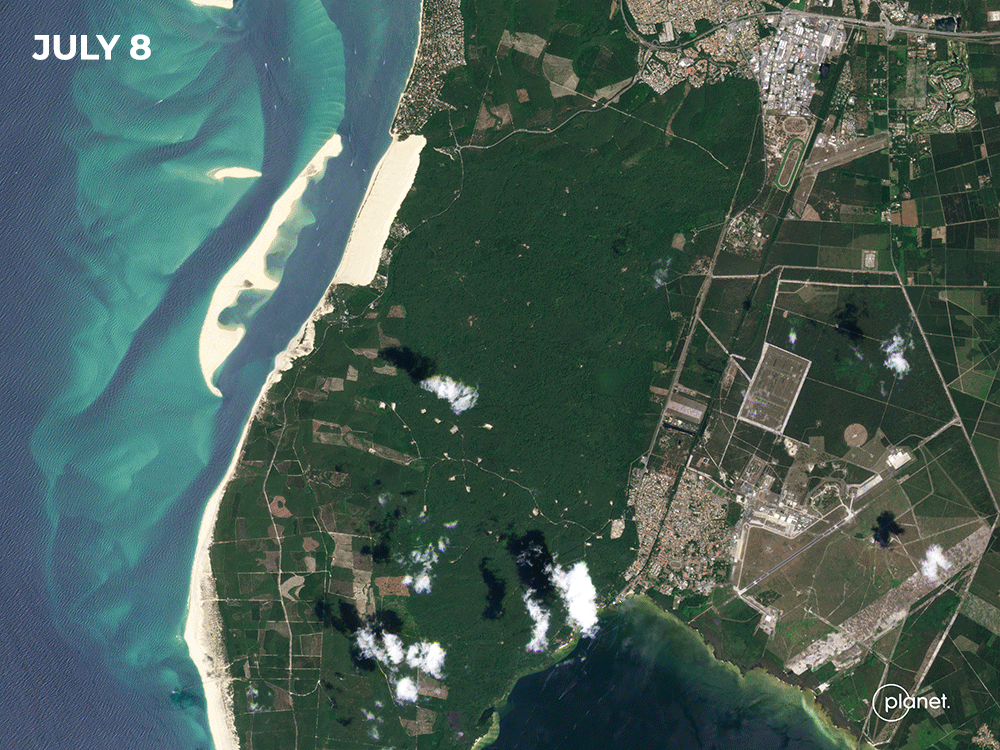 | PlanetScope • La Teste-de-Buch, France • July 8 - 18, 2022 |
News outlets are employing a range of media to visualize the heat wave’s impacts. Temperature maps cast the continent in warm shades of red and orange and dot regions with numbers indicating record-setting highs. On-the-ground photographers are sharing images of shirtless beachgoers, extreme heat public notices, and people cooling off by seeking shade, fanning themselves, and drinking water. From space, however, its impacts take a different form: the gradual drying of a landscape over time and precipitous bouts of wildfire.
| 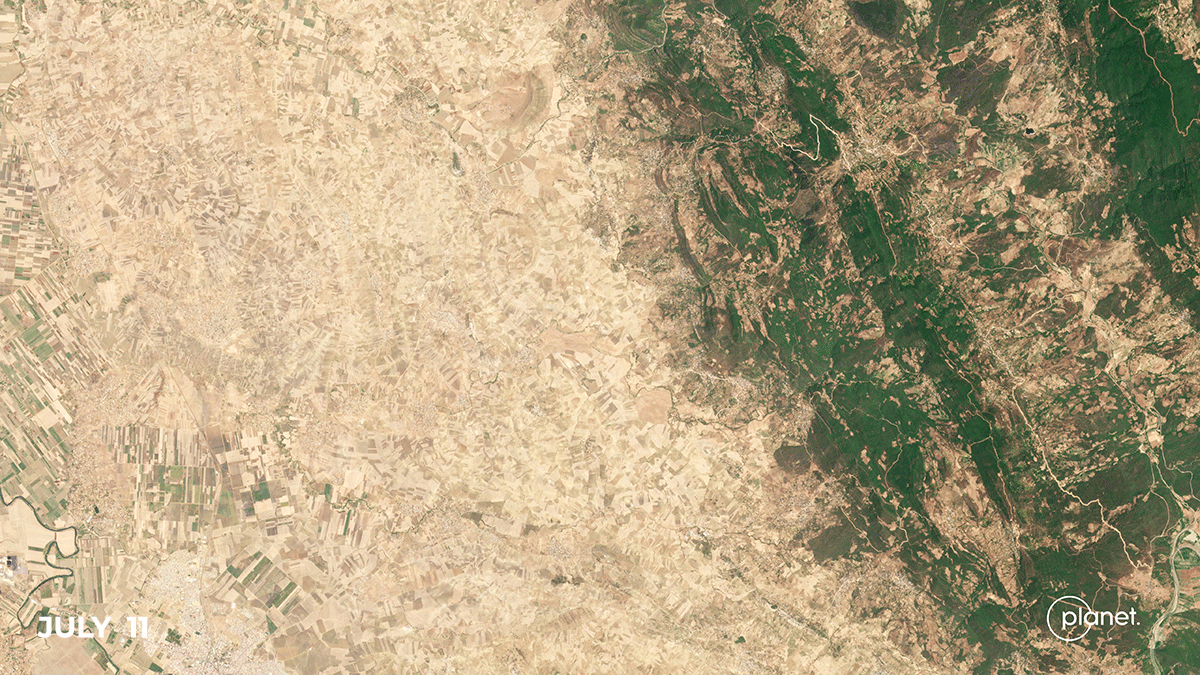 | PlanetScope • Ouezzane, Morocco • July 11 - 14, 2022 |
A surge of wildfires have swept across western Europe and North Africa in the past week, notably in France, Spain, Portugal, Greece, and Morocco. They’ve displaced thousands of people and the sweltering temperatures have killed hundreds. Within days our satellites have captured these landscapes as they progress from dry to burning to scarred.
| 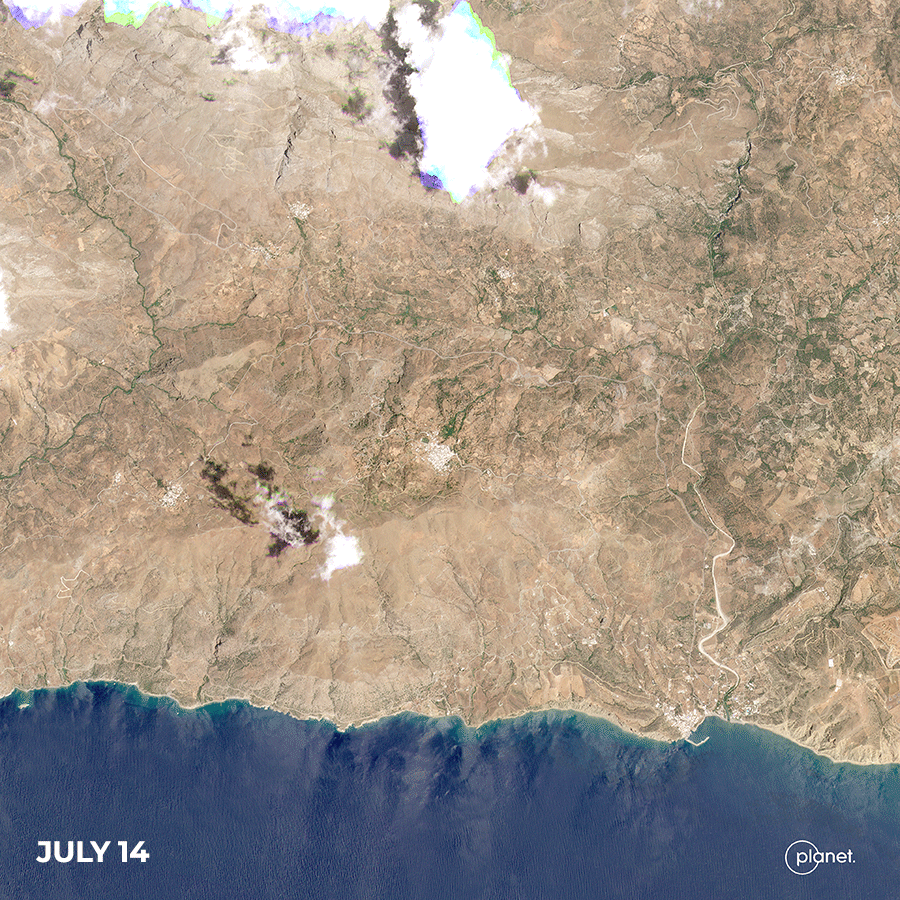 | PlanetScope • Melambes, Crete, Greece • July 14 - 16, 2022 |
Historic and severe summer temperatures have destabilized other ecosystems as well. Earlier this month, a heatwave caused the Marmolada Glacier in the Italian Dolomites to collapse, killing 9 and injuring others (the collapsed section is highlighted in red). As temperatures warm, glaciers recede. And as they recede, they destabilize. Global warming threatens this glacial security around the world, but heatwaves present a particularly acute threat that can accelerate their demise.
|  | SkySat • Marmolada Glacier, Italy • July 13, 2022 |
Summer is typically warm for places in the northern hemisphere, but extreme heat events like these are rare. Yet heatwaves will become more common as global temperatures continue to rise unabated. On its own, severe heat is deadly. But it’s also the flame and the fuse for a multitude of other environmental catastrophes: like drought, receding glaciers, and raging wildfires—all of which cascade into further challenges. Systematic problems at such a grand scale require wholesale intervention. In the long term, we can’t beat the heat by finding momentary shade and flapping a hand fan. |
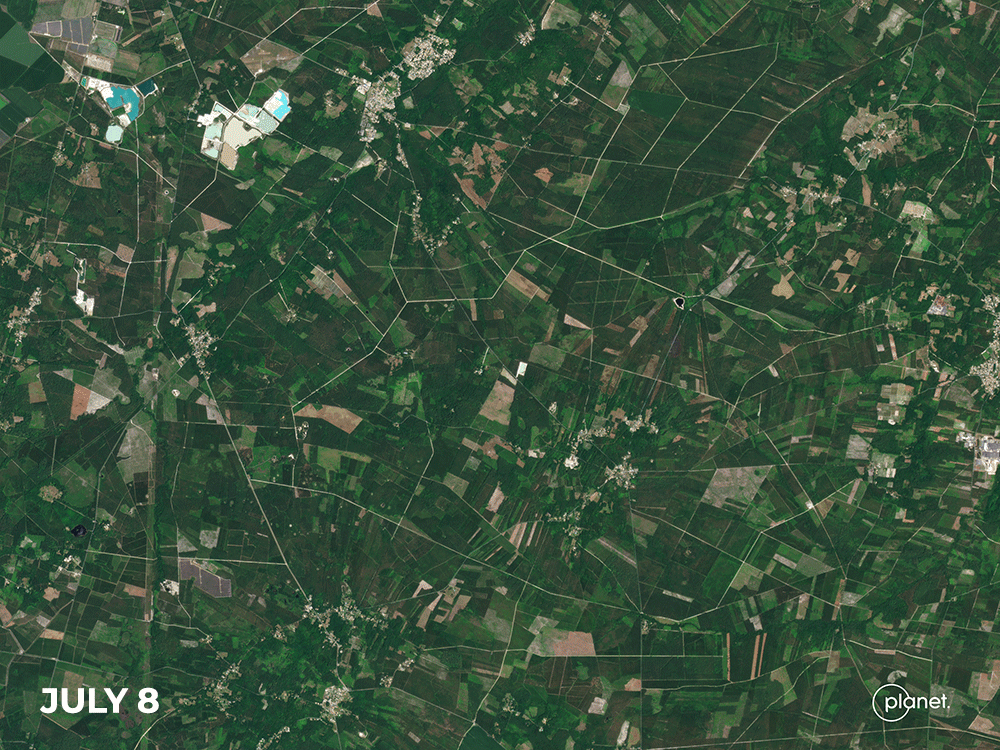 | PlanetScope • Guillos, France • July 8 - 13, 2022 |
|
|
|
What in the World: Nevada Test Site
How do you prepare yourself for another world’s terrain while on Earth? You find—or make—places with similar geology and train there. And as it turns out, the pockmarked landscape of the Nevada Test Site makes an ideal substitute for the Moon. Yesterday was the 53rd anniversary of Apollo 11’s first landing. And since we take images of the Earth, not the Moon, we figured we’d celebrate with this image of an area pivotal to the mission’s success.
| 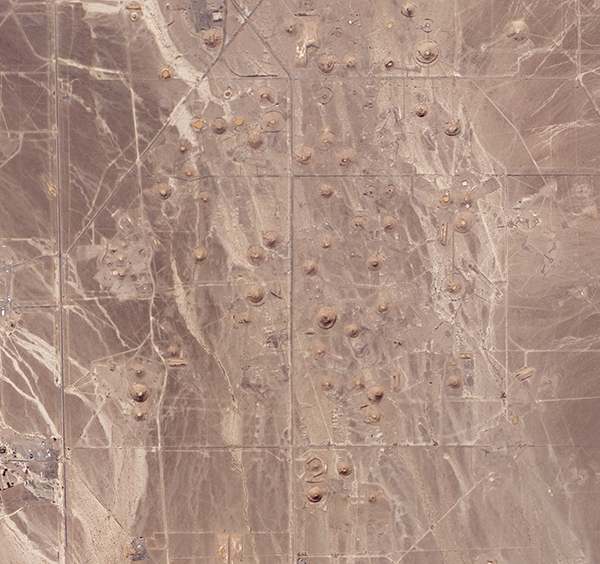 | PlanetScope • Nevada Test Site, Nevada, USA • October 23, 2015 |
NASA rigorously trained the three astronauts for their momentous journey by conducting field training—like collecting geological samples and driving the lunar rover—on terrain alike to the Moon’s surface. One of these was the Nevada Test Site, which has hosted 928 nuclear explosive tests between 1951 and 1992. While there the astronauts used its nuclear-made craters and ancient volcanic formations to practice navigating and working among the Moon’s numerous comet and asteroid impacts.
|
|
|
|
|
Avalanche
If you opened up a social media app last week, chances are you saw a hiker film an avalanche as it barreled down the mountain towards him. Moments before impact, he delivers a quintessentially-British uttering of “oh dear God” before ducking for cover behind some rocks. Despite the terrifying circumstances, everyone on the expedition survived. The cascading mass of ice and rocks was triggered by a glacier collapse, which started along a ridgeline in the Tian Shan Mountains in the top of the image. Debris from its downhill flow can be seen covering the center of the image, and the glacial ice is seen collected towards the bottom. The source of the collapse—now an ice cliff—is visible in the upper left corner, right under the cloud shadow. And like the Marmolada Glacier mentioned earlier in this issue, higher temperatures in the days leading up to the avalanche are thought to be partially responsible for its collapse.
| 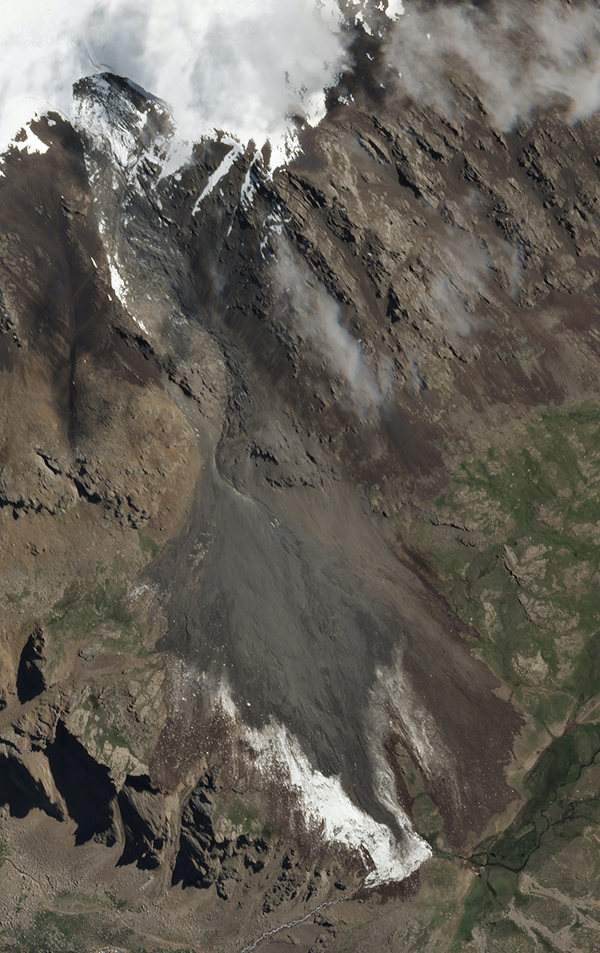 | SkySat • Tian Shan, Kyrgyzstan • July 14, 2022 |
|
|
|
|
|
Change of the Week: Elephants
[Queue David Attenborough voice] A herd of Earth’s largest land animal, the African bush elephant, gather around a drinking hole in South Africa—a common stop for those living in the Addo Elephant National Park. Elephants weigh between 2.5 and 7 tons and can reach 24 feet in length, meaning they’re easily spotted from space (as well the people in cars that congregate to watch them do their elephant things).
| 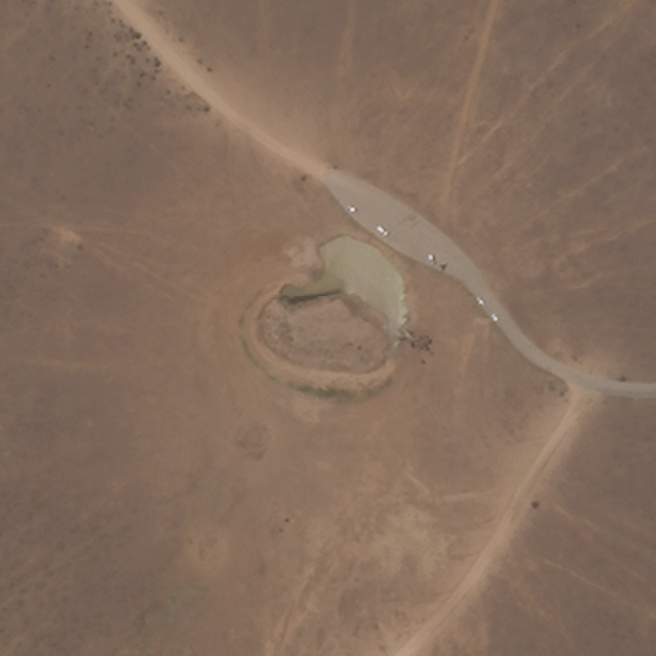 | Unprocessed PlanetScope • Addo Elephant National Park, South Africa • July 14 - November 24, 2019 |
|
|
|
|
|
Instagram Highlight: City of Light
You don’t need us to tell you how different places look during the day than at night. But we’re always amazed when we see the comparison from space. Our friends at Overview combined a daytime PlanetScope image with a nighttime USGS/NASA photo of Paris, the “City of Light,” to show just how much a place can change within a day. In the nighttime photo, the network of city streets are illuminated in detail, with the Champs-Élysées avenue shining brightest near the image’s center.
| 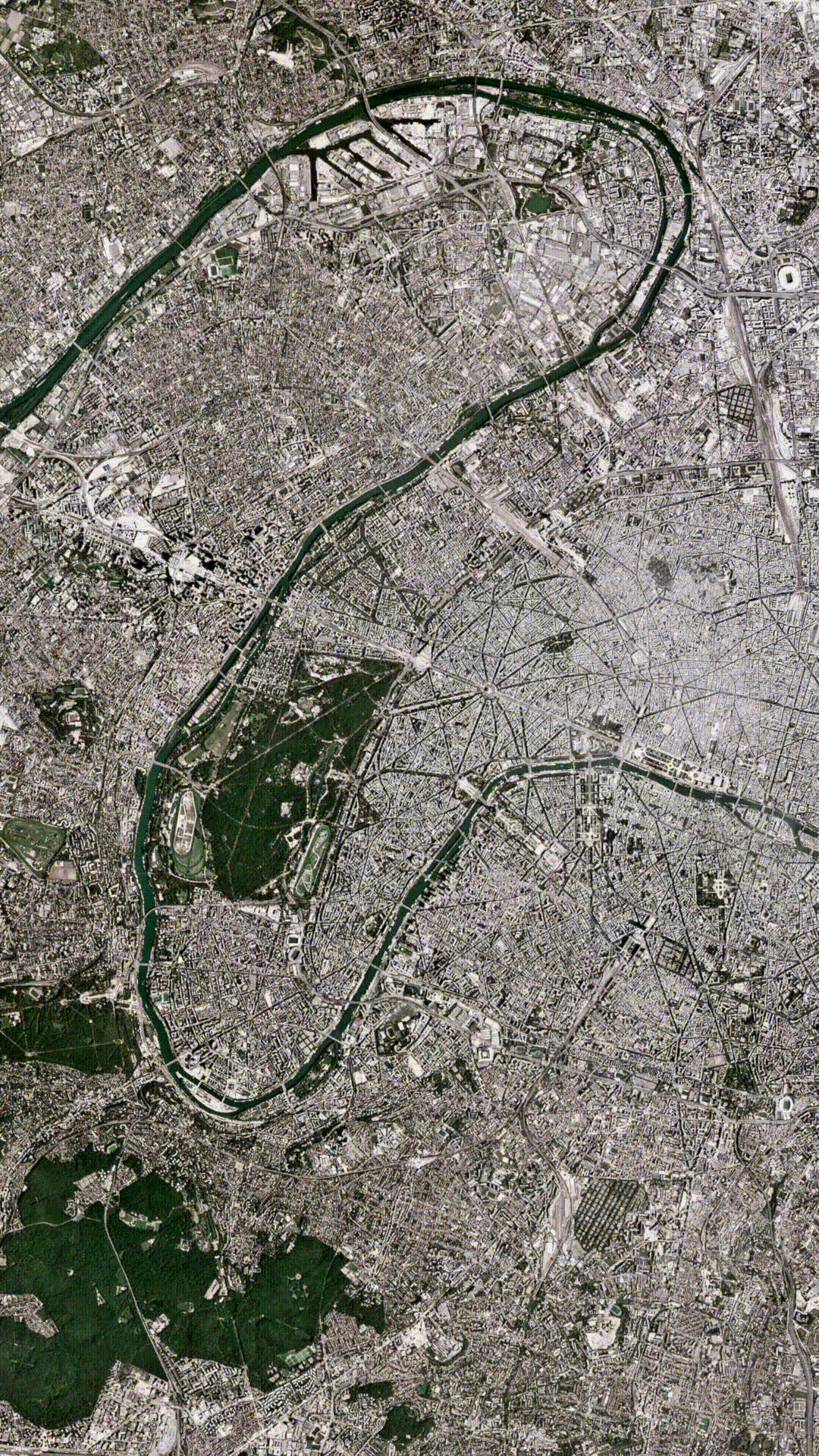 | Created by Overview • Source imagery from USGS/NASA and Planet |
|
|
|
|
|